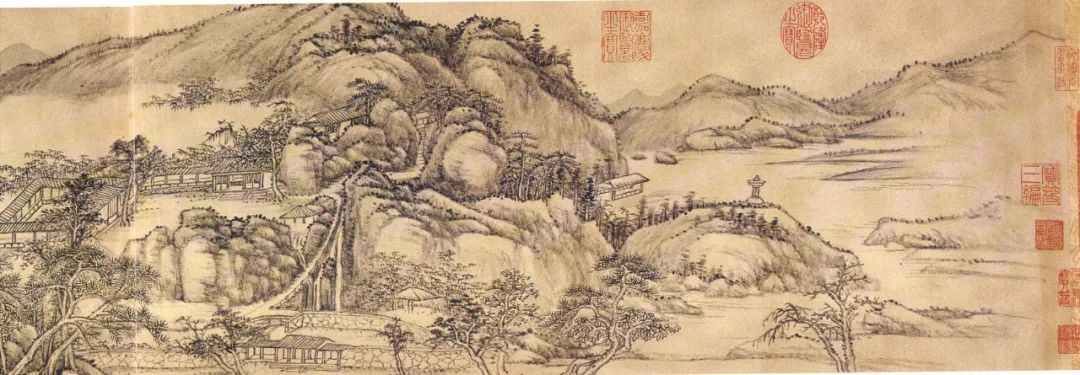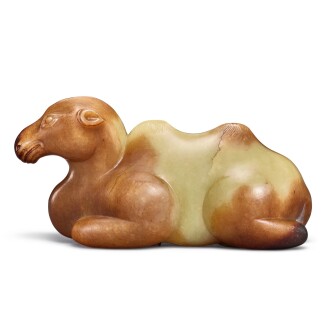I n the outskirts of Suzhou, there is a particularly scenic spot within the Hanshan Resort referred to as ‘Thousand Feet of Snow’ and so named because the mist emerging from the magnificent cascade was redolent of snow. Situated at this spot is The Pavilion of Listening to Snowfall, commissioned by Zhao Yiguang (1559-1625) descendant of the Song dynasty royal family. Qing dynasty scholar Zhang Dachun described the Hanshan Resort as having the cliff parted for mountain streams. Acclaimed as a verdant hermitage inhabited by celestial beings, ‘Thousand Feet of Snow’ offered the best of all vistas.

The year before the Qianlong Emperor undertook his first Southern Tour, which occurred in the fifteenth year of his reign (1751), he happened to acquire the draft of Hanshan Zhi (Records of Hanshan). In reading the document by by Zhao Yiguang over and over, he became intrigued and felt a spiritual bond wth the author. The Emperor was so entranced by the evocative description, in particular the sound of water, he travelled there on site to visit as part of the first Southern Tour.
To commemorate a series of momentous visits, a superb Khotan green jade boulder was carved into the image of the mountain in order to record the Emperor Qianlong’s impressions of the Pavilion of Listening to Snowfall. This jade mountain bears six poems that the Emperor composed on the pavilion – the earliest in 1751 and the latest in 1784 during his final Southern Tour. Thus, we can say that this masterpiece dates to the final years of the Qianlong reign. It was a symbol of the Southern Tours, a grand political enterprise that was pivotal to establishing the Manchu emperors’ sense of political legitimacy over the land and their subjects. Of more personal significance, this jade mountain was a way the Qianlong Emperor could always keep the landscape close to him within the walls his palaces; it was the memory of a place he adored and would never get to visit again.
The spring water at the ‘Thousand Feet of Snow’ inspired him to inscribe 'ting xue ' ('listening to snowfall'). After returning to the capital, he was inspired to commission replicas of the landscape at three imperial resorts: the Imperial Summer Villa in Chengde, West Garden in Beijing, and Mountain Retreat of Peace and Serenity on Mount Pan. All of these were given the name ‘Thousand Feet of Snow’.
In the 27th year of his reign, the Qianlong Emperor revisited the Hanshan Resort upon his third Southern Tour. That was when he composed the poem 'A Hermit Sojourning at an Old Site' (Youren Liu Jiuzhi ), which concludes with this line:
“I wake from sleep, wondering if you would allow me to stay in your hermitage?”
The Qianlong Emperor in the poem took a decidedly intimate tone, as if addressing a dear friend. It presents a rather endearing side to the Emperor.
The Qianlong Emperor’s fondness for the Hanshan Resort was unquestionable. He made the effort to complete six sojourns to the resort, the final trip occurring when the Emperor was well into his 70s. He composed more than 70 poems concerning Hanshan, including seventeen to commend Zhao Yiguang. Sadly, the Hanshan Resort was destroyed by the Taiping Rebellion in the Xianfeng Period, leaving only the rock inscriptions left by Qianlong and Zhao Yiguang himself. By the present jade boulder, however, offers us glimpse of the mysterious land that had enthralled the Emperor.

| 
|






